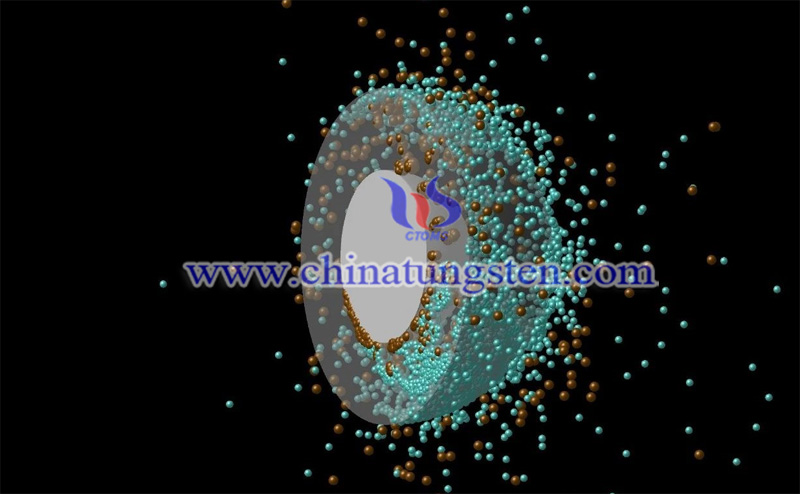Ancient Impacts Affect Tungsten Isotope Ratio, Mars Formed Slower Than Thought
- Details
- Category: Tungsten's News
- Published on Monday, 17 February 2020 22:17
A recent study shows the early cosmic impacts may have influenced the tungsten isotope ratio, suggesting that Mars formed much slower than previously thought. The early solar system was chaotic, and there is evidence that the red planet was likely to have been struck by planetesimals, small protoplanets with a diameter up to 1930 km, early in its history.
Scientists at the Southwest Research Institute (SWRI) have set a new model that provides high-resolution, smooth, large-scale projectiles that struck the red planet early after its core and mantle formed. The grain simulation suggests that early large collisions may have changed the proportion of tungsten isotopes, thereby affecting people's calculations of the red planet formation time.
How was the red planet formed? What is the influence of the early large collision on its evolution process? Billions of years of history have steadily erased evidence of early impact events. Luckily, we can see it from some of the remaining Martian meteorites.
Of the approximately 61,000 meteorites found on Earth, just 200 or so are thought to be of Martian origin, ejected from the Red Planet by more recent collisions. These meteorites contain many iron-loving elements, and their affinity for iron ranges from medium to very high. They tend to migrate from the Martian mantle to its core iron core during the formation of the red planet. Meteorites indicate that the red planet was bombed by an asteroid sometime after the formation of its main core. By studying the radioactive decay process of specific element isotopes that are locally produced in the mantle, scientists can help scientists understand when the red planet was formed.

Dr. Simone Marchi, a lead author of a Science Advances paper outlining their studies, said: "We knew the red planet received elements such as platinum and gold from early, large collisions. To investigate this process, we performed smoothed-particle hydrodynamics impact simulations. Based on our model, early collisions produce a heterogeneous, marble-cake-like Martian mantle. These results suggest that the prevailing view of Mars formation may be biased by the limited number of meteorites available for study."
Previously, based on the ratio of tungsten isotopes in Martian meteorites, it was thought that the red planet would grow rapidly within about 2-4 million years after the formation of the solar system. According to the new model, large and early collisions could have altered the tungsten isotopic balance, which could support a Mars formation timescale of up to 20 million years,
Robin Canup, assistant vice president of SwRI's Space Science and Engineering Division, said that the Collisions by projectiles large enough to have their own cores and mantles could result in a heterogeneous mixture of those materials in the early Martian mantle. This can lead to different interpretations of the timing of the red planet's formation than those that assume that all projectiles are small and homogenous.
The Martian meteorite that landed on Earth may originate from a few places on Mars. The SWRI team's research indicates that the Martian mantle may accept a variety of different projectile materials, leading to changes in the concentration of iron-loving elements, such as tungsten.
- Tungsten Manufacturer & Supplier, Chinatungsten Online: www.chinatungsten.com
- Tungsten News & Prices of China Tungsten Industry Association: www.ctia.com.cn
- Molybdenum News & Price: news.molybdenum.com.cn
- Tel.: 86 592 5129696; Fax: 86 592 5129797; Email: sales@chinatungsten.com



 sales@chinatungsten.com
sales@chinatungsten.com